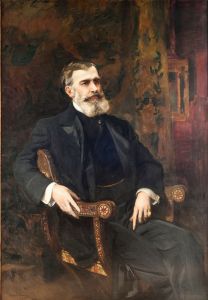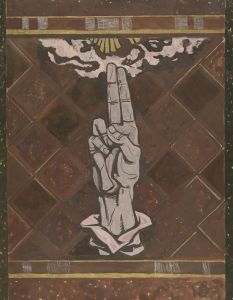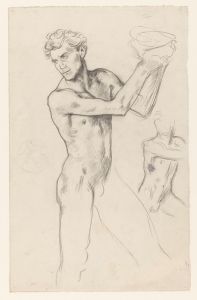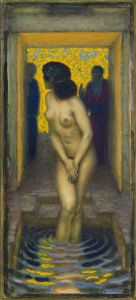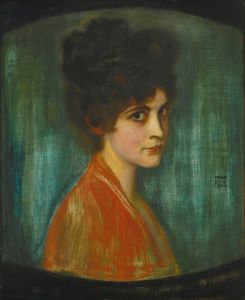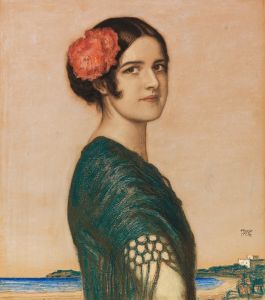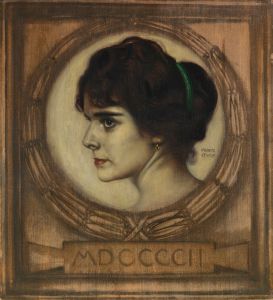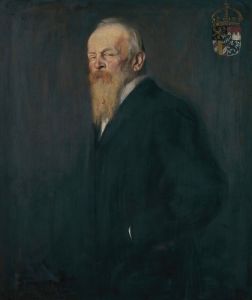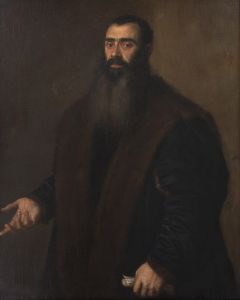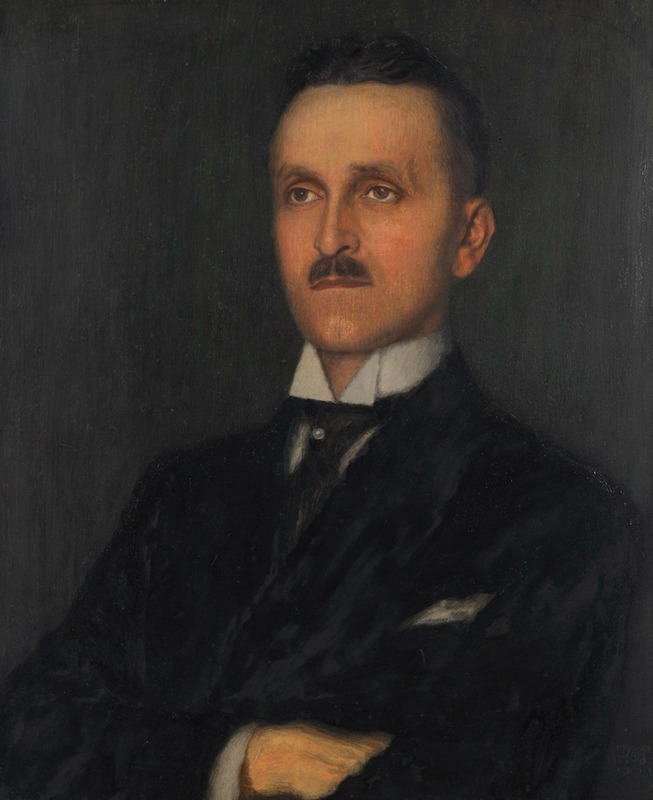
Herrenbildnis
A hand-painted replica of Franz von Stuck’s masterpiece Herrenbildnis, meticulously crafted by professional artists to capture the true essence of the original. Each piece is created with museum-quality canvas and rare mineral pigments, carefully painted by experienced artists with delicate brushstrokes and rich, layered colors to perfectly recreate the texture of the original artwork. Unlike machine-printed reproductions, this hand-painted version brings the painting to life, infused with the artist’s emotions and skill in every stroke. Whether for personal collection or home decoration, it instantly elevates the artistic atmosphere of any space.
Franz von Stuck was a prominent German painter, sculptor, and printmaker, born on February 23, 1863, in Tettenweis, Bavaria, and died on August 30, 1928, in Munich. He was a key figure in the Munich Secession movement and is best known for his symbolist works and his role as a founding member of the Munich Secession in 1892. Stuck's art often explored mythological themes, and he was renowned for his dramatic use of light and shadow, as well as his skillful portrayal of the human form.
One of Stuck's notable works is "Herrenbildnis," which translates to "Portrait of a Gentleman." This painting exemplifies Stuck's mastery in portraiture, capturing the essence and character of his subject with meticulous detail and psychological depth. The exact date of creation for "Herrenbildnis" is not well-documented, but it is believed to have been painted during the height of Stuck's career in the late 19th or early 20th century.
"Herrenbildnis" showcases Stuck's ability to blend realism with a touch of idealism, a characteristic feature of his portrait works. The gentleman in the painting is depicted with a dignified and composed expression, exuding an air of confidence and sophistication. Stuck's use of a dark, muted color palette, combined with his precise brushwork, highlights the subject's facial features and attire, drawing the viewer's attention to the intricate details of the portrait.
The background of the painting is relatively simple, ensuring that the focus remains on the gentleman. Stuck's skillful use of chiaroscuro, the contrast between light and dark, adds depth and dimension to the portrait, creating a sense of three-dimensionality. This technique also enhances the dramatic effect of the painting, a hallmark of Stuck's style.
Franz von Stuck's influence extended beyond his paintings. He was also a respected teacher at the Academy of Fine Arts in Munich, where he mentored several notable artists, including Paul Klee and Wassily Kandinsky. Stuck's contributions to the art world were recognized during his lifetime, and he received numerous accolades and honors for his work.
"Herrenbildnis" is a testament to Stuck's talent as a portrait artist and his ability to capture the essence of his subjects. The painting remains an important example of his contribution to the symbolist movement and his impact on the development of modern art in Germany. Today, Franz von Stuck's works, including "Herrenbildnis," are held in high regard and can be found in various museums and private collections around the world, continuing to inspire and captivate audiences with their timeless beauty and artistic excellence.





